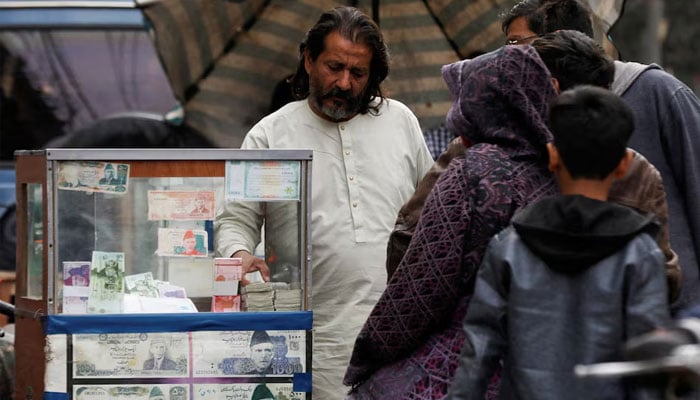
As Pakistan began another financial year this month, in the midst of generalized skepticism, the country’s rulers presided over a strong contrast between the mood on the streets and its self -proclaimed achievements.
On the positive side, Pakistan today remains safely from his dangerous perspective only two years ago, surrounded by warnings of an upcoming breach of foreign debt payments, while the rupee faced volatility. However, a subsequent return to another IMF loan program has helped Pakistan recover solvency, although temporarily.
However, the gap between the mood on the streets and Power runners highlights a great dilemma. While Prime Minister Shehbaz Sharif and the members of his cabinet claim to take Pakistan towards greater prosperity, there is no shortage of cynics who present powerful counterarguments.
The successive rulers of Pakistan have not repeatedly failed to listen to the warning signals. In a country where almost 40% of the population, or approximately 100 million people, live below the poverty line, leading Pakistan with a “subchha hai” or everything is fine, the mantra can trigger a calculation error in the future.
Together with this powerful reality is the deep challenge of climate change, widely illustrated by the current disasters related to rain in Pakistan. In this wide trend, it is difficult to find a region where monsoon rains have not created an unexpected effect. Changing climatic patterns have been a powerful reminder that Pakistan’s food security is increasingly in doubt.
The recent recession in the agricultural production of Pakistan, which grew by a scarce 0.6% during the last financial year (July 2024 to June 2025), deserves much attention for more than one reason.
The continuous losses in agriculture immediately raise convincing questions about the future of cycles related to Pakistan crops, dating from many centuries. It is a pertinent question in view of the devastating consequences that will surely flow in case the problems related to food insecurity remain unresolved.
Closely related are the considerable opportunities for employment and/or generation of income linked to agriculture, which makes this a crucial sector for Pakistan’s economy. Unless the income of the poorest farmers is effectively raised and protected, Pakistan can be forced to prepare for a potentially extended social and economic agitation in the coming years. In a nutshell, Pakistan must do everything possible to protect those who already live in hopeless poverty for the future.
The industrial sector of Pakistan is also surrounded by convincing questions, especially as a large -scale manufacturing hired at 1.6% during the last financial year. At the moment, the improvement in the current account of Pakistan was mainly facilitated by the remittances of the expatriate Pakistani who live throughout the world. It is a continuous trend that has helped the country to remain afloat.
However, a guarantee to protect Pakistan’s ability to fulfill his obligations in foreign currency must be linked to a robust increase in exports backed by a variety of sources. On this trip, the diversification of exports ranging from surpluses in agriculture to the industrial sector is an absolute necessity.
And finally, the official fanfare this week behind the launch of a simplified tax presentation system for salaried people deserves a closer scrutiny. The largest hole surrounding the tax collections is not found with the salaried class already loaded with Pakistan. On the other hand, it surrounds key sectors of the economy that do not contribute to the National Income Tax of Pakistan or contribute significantly below their fees.
Again and again, Pakistan recalled such gaps, mainly driven by the failure of the country’s leaders to closely enforce the state of the State. But given the multifaceted challenges in the economic front of Pakistan, it is now essential to change the past in favor of a more progressive future.
Ultimately, Pakistan’s ability to overcome his current economic challenges lies in his ability to undertake reforms vigorously. These reforms will succeed when Pakistan’s leaders establish a clear path and lead with the example. Presiding over a swollen public sector, the government has supervised two recent cases that sent an unfavorable message.
First, the cause of reviving the international airlines of Pakistan (PIA) state property was similar to return life to a dead horse. Even if it is finally privatized, Pia’s great debt will remain in the government account as a liability. It is a case that instantly remembers a recommendation of the well -known businessman Mian Mohammad Mansha. Years ago, he publicly requested the immediate privatization of PIA, even for a single US dollar, provided that its new owner assumed all its liabilities, including debt.
Secondly, the recently presented plan to revive Karachi -based Pakistan steel factories with Russia’s support is another case that marked an U turn. Should Pakistan expand its footprint in the public sector, given the way in which its economy has deteriorated under the weight of the government owned by the government? To that convincing question, the answer must be clearly in the negative.
Discharge of responsibility: The views expressed in this piece are that of writer and do not necessarily reflect the edito of PakGazette.tvRial Policy
The writer is a journalist based in Islamabad who writes about political and economic matters. You can contact: [email protected]
Originally published in the news



